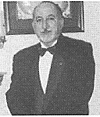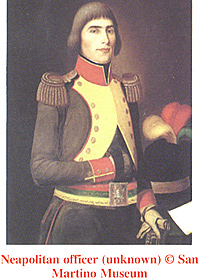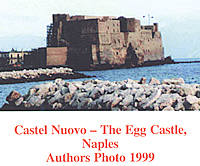A Tapestry of Kings,
Fools, and Traitors
The Formation and Fall
of the Parthenon Republic
of Naples in 1799
A Neapolitan Solution
by Robert Fletcher, USA
| |
Prince Francesco Pignatelli and General Mack hearing of Capua's successful defense sent a committee from Naples to open talks with General Championnet. The Bourbons called for an armistice, which Championnet refused on January 1. Finally on January 11th, Sparanise, representatives of the Prince and the Vicario council signed an armistice. The agreement called for suspension of military operations for two months, and in return, the Council would turn over Capua and pay the French an indemnity of two payments to be consigned to the French on the 15th and 25th of January. Championnet, not in possession of a siege train and with pay in arrears agreed to the conditions. News of the armistice reached Naples, where Pignatelli, Mack, and the Vicario Municipal Council were accused of betraying the city to the French. Crowds formed and the Lazzari held demonstrations and meetings in the streets, each group coming to their own conclusion, but all united in hate and fear of the French. During the evening of the 14th, French Commissars arrived to pick up the first indemnity payment. Naples authorities had not gathered sufficient funds, as King Ferdinand had taken the treasury and the near rebellious local populace would not cooperate. As the French presence in Naples became known, groups of Lazzari gathered, protesting the French in Naples, calling for their death, and who had to be escorted outside the city by the Civil guard, in hopes that the Lazzaroni could be placated. During the night the Civil Guard was used to maintain calm, but as morning arrived, new rioting broke out with the now armed Lazzaroni, who had been let into the city armory by the demoralized Army garrison at the "New" castle (Castel Nuovo).
The Civic Guard, Army units, and the recently returned Livorno expedition under Bourbon General Naselli could possibly have quelled the rioters, but instead in the confusion, the Lazzarom disanned the Army and expeditionary soldiers. Prisoners were set free from prisons and remaining soldiers deserted to the Lazzari mob as rioting and demonstrations pervaded the city. During the night of the 16th and 17th, the Vicario Municipal Council fled the city for Palermo by merchant vessels, and upon their arrival, King Ferdinand ordered their imprisonment for treating with the enemy. The "Unfortunate" General Mack fled Naples to surrender himself to the mercies of General Championnet, as the Lazzarom searched for him, chanting for his death. The Lazzarom, after days of tumult, called for military leaders, wanting any but those associated with the surrenders and recent defeats. Two were selected: Girolamo Pignatelli, who fought the French in the 1796 Piedmont campaigns and Lucio Caracciolo, who distinguished himself in fighting the French at Capua. The Lazzaroni now occupied all of the Naples city gates, walls and fortifications, including the Castle of Saint Elmo, which overlooked the city. A new city government, the "City Senate" was formed from the remainder of the government and mob. The City Senate called for a new armistice and sent a new committee to dictate the new terms to Championnet. A Tapestry of Kings, Fools, and Traitors Formation and Fall of the Parthenon Republic of Naples in 1799
Naples Declares War on Rome A Neapolitan Solution To Take The City Of Naples The Parthenopean Republic of Naples Internal Problems in The Republic A Tapestry of Kings, Fools, and Traitors Back to Table of Contents -- First Empire #64 Back to First Empire List of Issues Back to MagWeb Master Magazine List © Copyright 2002 by First Empire. This article appears in MagWeb (Magazine Web) on the Internet World Wide Web. Other military history articles and gaming articles are available at http://www.magweb.com |

 Neapolitan officer (unknown) San Martino Museum
Neapolitan officer (unknown) San Martino Museum
 Castel Nuovo - The Egg Castle, Naples Authors Photo 1999
Castel Nuovo - The Egg Castle, Naples Authors Photo 1999